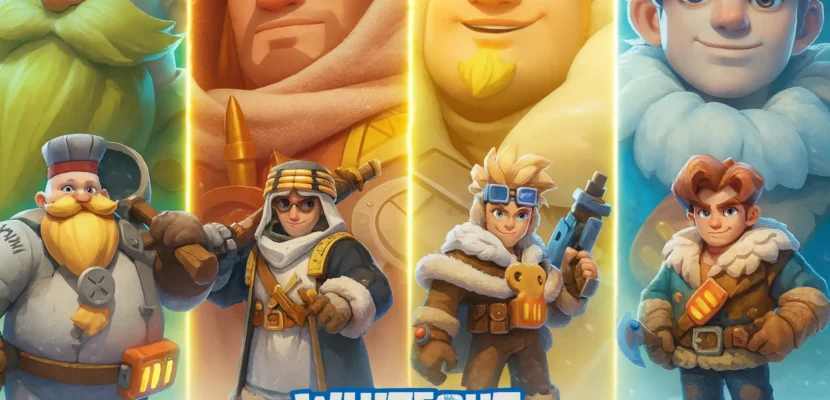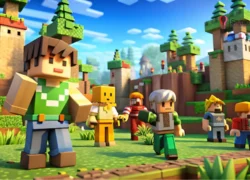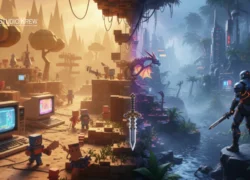Introduction: Survival Gaming in a Post-PUBG World
When PUBG Mobile burst onto the scene, it redefined mobile gaming forever. The battle royale format was more than just a trend. It became a cultural phenomenon, pulling in millions of players daily and setting the stage for survival games to dominate global charts. But in 2025, the survival genre has matured far beyond PUBG’s adrenaline-fueled matches. Today, the real challenge isn’t just attracting downloads. It’s building lasting engagement in a crowded marketplace.
Whiteout Survival is now one of the top-grossing survival games, with player sessions up 13% from last year. Instead of just seeing quick bursts of activity like early battle royales, Whiteout Survival is showing that players can stay loyal. This is thanks to improved game design, enhanced community features, and more strategic LiveOps planning.
This shift is especially critical in a post-PUBG era. The survival genre must now compete with shooters, hybrid casual games, MMO-lite titles, and even metaverse-inspired games. Players aren’t satisfied with quick thrills anymore. They’re looking for reasons to come back week after week, season after season. Whiteout Survival’s success story offers a blueprint for how developers can thrive in this new landscape.
With this foundation set, the next sections will analyze Whiteout Survival’s engagement tactics for 2025 and examine broader trends in mobile survival games for Q3. This context clarifies that survival now means earning player loyalty, not just winning matches.
Whiteout Survival’s Market Positioning
With PUBG Mobile and Free Fire leading the genre for years, new survival games often struggle to get noticed. Whiteout Survival stands out because it focuses on building a lasting ecosystem instead of chasing short-term trends.
Sensor Tower’s Q3 2025 data shows Whiteout Survival is regularly among the top 10 grossing survival games worldwide, with a 13% increase in player sessions over the past year. This kind of growth is rare, as most survival games lose momentum after their launch. Even better, players are spending more time in each session, showing they’re truly invested.
| Google Play | Apple Store | |
| Ratings | 4.2 | 4.6 |
| Downloads | 50M+ | 07M – 14M |
| Release Date | February 9, 2023 | December 3, 2022 |
| Reviews | 1.29M reviews | 344.7K Ratings |
| Last Update | 17 Sept 2025 | Aug 21, 2025 |
The game’s strength lies in its dual positioning:
- For casual players, it offers a rich survival setting with easy entry points, daily quests, and narrative-driven missions.
- For core gamers, it incorporates base-building mechanics, alliance wars, and PvP tournaments, adding longevity and strategic depth to the game.
This strategy is working for both players and the competitive gaming scene. Smaller esports organizers used to focus mainly on PUBG and Free Fire, but now they’re starting to try out Whiteout Survival as a new competitive option. While it’s not yet a global esports giant, its blend of teamwork and competition makes it a strong choice for mid-level esports events.
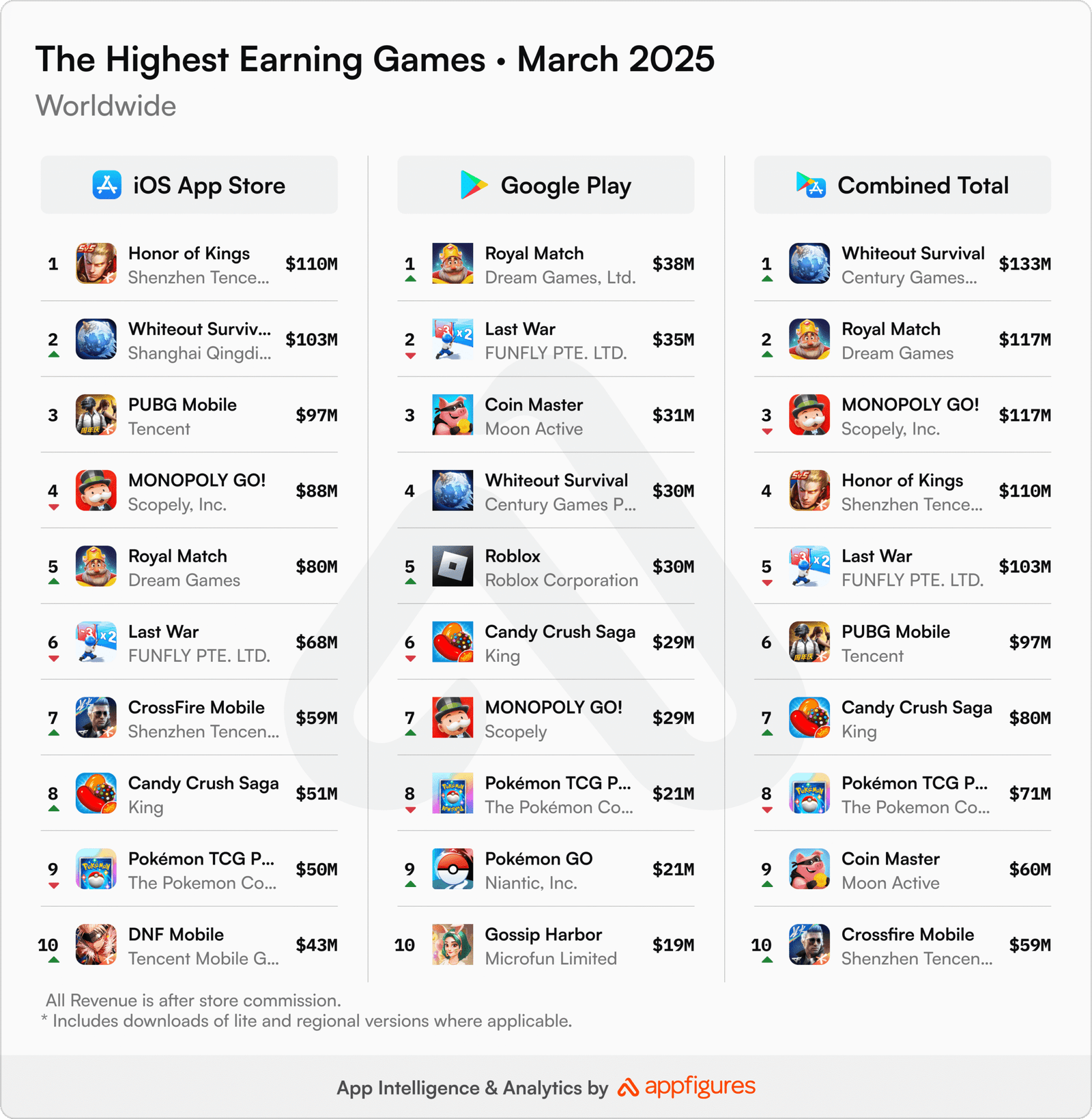
Overall, Whiteout Survival demonstrates that retaining player loyalty is now the key to standing out in mobile survival games. Studios are measuring success by how well they keep players coming back, not just by short-term popularity.
The Strategy Shift: From Short-Term Thrills to Long-Term Loyalty
When PUBG Mobile gained popularity, it drew millions of players into the excitement of survival battles. The fast-paced action made the genre addictive and easy to replay. But over time, problems showed up—fewer players stuck around, sessions got shorter, and many games had to spend more on marketing just to keep going.
Whiteout Survival takes a different approach. Rather than just offering quick rewards, it employs systems that encourage players to stay for the long term. Players build bases, join alliances, manage resources, and keep their progress from season to season. This shift aligns with a broader trend in mobile survival games, where lasting engagement is more important than fleeting popularity.
Some of the most notable elements of Whiteout’s shift include:
- Persistent Progression: Unlike the “reset every match” model of PUBG, Whiteout Survival gives players a sense of continuity. Structures, alliances, and achievements carry weight beyond a single play session.
- Community-Centric Play: By encouraging clans and teamwork, Whiteout helps players form social bonds, which are often the most effective way to keep people engaged and playing.
- Narrative-Driven Survival: Adding a narrative layer provides context to player actions, transforming the grind into a story.
We see this strategy work across many types of games at StudioKrew: players stick around when they care about their progress and feel part of a community. By focusing on long-term loyalty rather than quick rewards, Whiteout Survival has built a stronger and more loyal player base.
In short, lasting loyalty now defines winning strategies in survival games. Titles that prioritize long-term engagement, like Whiteout Survival, are most likely to succeed in a crowded post-PUBG market.
Core Engagement Mechanics Redefined
Whiteout Survival stands out not just for its icy world or survival theme, but for how it changes the core gameplay to keep players interested beyond the usual ‘drop, loot, survive’ routine. While PUBG and Free Fire focus on quick matches, Whiteout Survival uses long-term systems that help players stay invested.
Here are some of the standout mechanics:
Dynamic Weather & Resource Scarcity
Whiteout Survival introduces environmental challenges such as snowstorms, fuel shortages, and fluctuating food supplies, forcing players to adjust their strategies with every session. This unpredictability keeps the game fresh and makes survival more intense. Players are not just competing with each other—they’re also battling the environment.
Studios working with custom game development services often use similar dynamic systems, where unpredictability is a deliberate tool to boost replayability.
Base Building & Alliances
Whiteout stands out by moving from solo play to community-driven gameplay. Building bases is more than just for looks—it affects resource management, defense, and clan strength. When players form alliances, the social aspect becomes even stronger. Our Engagement Loop Diagram illustrates that alliances not only enhance gameplay but also foster ongoing cooperation, competition, and rewards that keep players engaged and loyal.
This mirrors trends we observe in Mobile game development, where social mechanics consistently outperform solo systems in keeping players engaged over months, rather than days.
Cross-Season Progression
In PUBG, every match starts from scratch. Whiteout Survival changes this by letting progress, gear, and alliance status carry over from season to season. This makes the game feel like a continuous world, rather than just a series of separate battles. Our Engagement Curve Comparison shows that this approach helps Whiteout keep players longer, especially after the first month, while other games see a drop-off.
Retention models like these are at the core of game LiveOps strategies, where the real focus is on keeping players engaged across multiple content cycles.
Narrative Integration
Survival without context can feel like a grind. Whiteout threads in story-driven missions. These missions give meaning to resource scarcity and clan battles. Instead of “just another quest,” players feel they’re part of an unfolding survival saga. Our Player Journey Infographic illustrates how this narrative arc fosters engagement from the very beginning. It continues through seasonal events, ensuring the experience feels like a story rather than a cycle.
Narrative hooks, which we’ve applied in entertainment-focused game development, consistently improve session times and long-term retention by giving players a reason to return.
Monetization Meets Retention: The Balance
Monetization in survival games has always been tricky. Early on, many games utilized loot boxes and pay-to-win upgrades, which quickly boosted revenue but often upset players and led to them leaving. By 2025, the market is expected to have grown. Players expect more, and games like Whiteout Survival demonstrate that fair monetization can actually help retain players.
Battle Passes & Seasonal Economies
Whiteout Survival utilizes the popular battle pass model, incorporating survival-themed rewards. Instead of only offering skins and cosmetics, players get gear upgrades, resource boosts, and story unlocks that make the game deeper. This way, spending money helps players progress, rather than just skipping ahead, and it creates a more engaging game environment.
(This design shift reflects what we’ve seen in our hybrid-casual game development services, where monetization systems must reward players’ time and effort rather than simply extract value. The result is not just revenue, but stronger retention curves.)
Cosmetics Without the Pay-to-Win Problem
Player identity plays a significant role in Whiteout Survival. Cosmetic items, such as character outfits, base decorations, and seasonal themes, encourage spending without making the game pay-to-win. App Annie’s Q3 2025 report shows that cosmetic items now make up over 42% of in-app purchase revenue in top survival and shooter games.
(For developers exploring similar strategies, our custom game development solutions often integrate cosmetic economies that enhance immersion without tipping competitive balance.)
Fair Monetization = Higher Loyalty
One important lesson from Whiteout Survival is that players who spend money are more likely to continue playing, but only if they perceive the spending as fair. The game’s monetization avoids giving big spenders too much power, which helps keep free players from leaving. This balance is evident in its 13% yearly growth rate, demonstrating that fairness is just as important as fun in fostering loyalty.
(It’s a principle we reinforce in our LiveOps-driven game development projects, where fair monetization is paired with retention-first design to maximize lifetime value.)
💡 Did You Know?
- Survival games generated over $4.7 billion in global revenue in 2024, with projections pointing to steady growth through 2026.
- Titles with battle pass monetization models report up to 25% higher retention rates compared to those relying on loot boxes.
- Whiteout Survival leads the survival segment in ARPU ($1.60 per user in Q3 2025), outperforming both PUBG Mobile and Free Fire.
(Source: App Annie, Sensor Tower Q3 2025 reports)
Community & Esports Integration
Survival games are more than just their mechanics. They do best when players feel like they’re part of something bigger. Whiteout Survival understands this, and in 2025, community is a key part of the experience. By adding both teamwork and competition, the game is becoming more than a survival simulator—it’s turning into a social platform.
Clans, Alliances & Social Bonds
Alliances are a big focus in Whiteout Survival. Players don’t just play alone—they join clans, share resources, and defend their territory together. This creates a sense of responsibility, as leaving the game also means leaving your clan behind. For survival games, these community connections are one of the best ways to keep players coming back.
(At StudioKrew, our MMO game development solutions show the same trend—social mechanics consistently outperform individual-only systems in keeping players engaged months after launch.)
Esports-Lite Integration
PUBG Mobile and Free Fire became big through major esports events, but Whiteout Survival is growing in a different way. Instead of jumping into huge tournaments, it focuses on mid-level competitions and clan wars that regular players can join. These events boost daily active users and create a grassroots esports scene that could grow even bigger over time.
(This incremental approach mirrors strategies we often design in online multiplayer game development, where competitive layers are built first for accessibility, then scaled for broadcast-ready formats.)
From Game to Platform
By combining teamwork and competition, Whiteout Survival is evolving into more than just a survival game. It’s becoming a hub for player-run events, social stories, and accessible esports. As shown in our Engagement Loop Diagram, these community features help keep players coming back, turning short-term play into long-term loyalty.
As survival esports become more popular on streaming platforms, Whiteout is in a good spot to build its own niche, much like PUBG did. However, its approach is more focused on players and less controlled from the top.
Mobile Survival Games Trends Q3 2025
The survival genre has had its ups and downs since PUBG started the trend in 2017. But by Q3 2025, it’s clear that survival games are not going away—they’re changing. The focus is now on keeping players engaged, fair monetization, and building communities, with Whiteout Survival as a leading example.
Market Snapshot
According to Sensor Tower’s Q3 2025 report, mobile survival games generated nearly $1.2 billion globally this quarter, with consistent YoY growth despite increased competition from hybrid-casual and MMO-lite genres. Notably:
- Free Fire remains the leader in DAU (28M), but its growth is slowing (+3% YoY).
- PUBG Mobile remains a revenue giant, though engagement is largely stagnant (+1% session growth).
- LifeAfter and Lost Light are carving steady niches with narrative-heavy survival, each posting modest growth (+5–6% YoY).
- Whiteout Survival is the breakout story, with +13% sessions YoY and the highest ARPU in the segment at $1.60 per user.
(See chart: Top Mobile Survival Games – Q3 2025 Trends, where Whiteout is highlighted for its momentum.)
Emerging Player Trends
Three major patterns are shaping how players interact with survival titles in 2025:
- Narrative-Driven Survival: Players are gravitating towards games that combine survival mechanics with story arcs, turning grind into meaningful progression. Whiteout and LifeAfter are clear examples of this trend.
- Community Retention Hooks: Clans, alliances, and cooperative survival are proving to be stronger retention drivers than pure PvP. Our Retention by Feature Heatmap indicates that community features have a significant impact on Day 30 and Day 90 retention rates, compared to standalone PvP systems.
- Fair Monetization Preference: Across the genre, cosmetic-first economies and battle pass systems are outperforming loot-box-driven models in both revenue stability and player satisfaction.
Regional Insights
- India & Southeast Asia remain the largest markets for survival DAU, driven by Free Fire and PUBG Mobile.
- North America & Europe are seeing stronger adoption of hybrid-survival experiences, such as Whiteout, especially as esports-lite formats gain traction.
- The Middle East & UAE are emerging hotspots, with rising demand for survival games tied to community play and cultural event integration.
(This aligns with what we’ve covered in StudioKrew’s online game development services, where global publishing strategies often require tailoring engagement loops by region.)
The Bigger Picture
The Mobile Survival Games Trends Q3 2025 chart shows that success is no longer about having the most downloads. Now, it’s about keeping players loyal and monetizing in a fair way. Whiteout Survival is leading the way with this new approach.
StudioKrew’s Perspective: Designing Engagement for 2025
At StudioKrew, we’ve seen how the rules for survival games and mobile gaming are changing. After PUBG, it’s not about making the most exciting battle royale copy. It’s about designing games that build loyalty, community, and long-term value.
Our projects across survival, MMO, hybrid-casual, and even casino genres highlight the same truth Whiteout Survival embodies: lasting engagement beats short-term virality. Players want games that reward progress, respect their time, and foster real social connections.
LiveOps-Driven Retention
Sustainable survival games are built on strong LiveOps foundations—seasonal updates, cross-season carryovers, and timely events. Many of the studios we collaborate with look to us for game development expertise where LiveOps isn’t an afterthought, but the engine driving retention well past launch day.
Community as the Glue
The games that thrive in 2025 are those where players feel connected to one another. From large-scale MMOs to alliance-based survival titles, our work in MMO game development demonstrates that social bonds often outperform single-player systems in terms of retention and revenue longevity.
Fair & Scalable Monetization
Whiteout Survival’s success also demonstrates that player-focused monetization, such as battle passes, cosmetics, and rewards tied to progress, can foster both trust and revenue. In our custom game development services, we often utilize cosmetic-first systems that cater to player habits in various regions, ensuring fair and scalable monetization.
Cross-Genre Innovation
Survival mechanics are no longer confined to survival games. Scarcity systems, seasonal storytelling, and alliance dynamics can enhance everything from online multiplayer experiences to educational and hybrid titles. By blending these mechanics across genres, we help developers deliver experiences that feel fresh yet familiar.
In 2025, survival is more than just a game genre; it’s a way of thinking about design. At StudioKrew, we aim to help studios use these ideas to make games that last, not just follow trends.
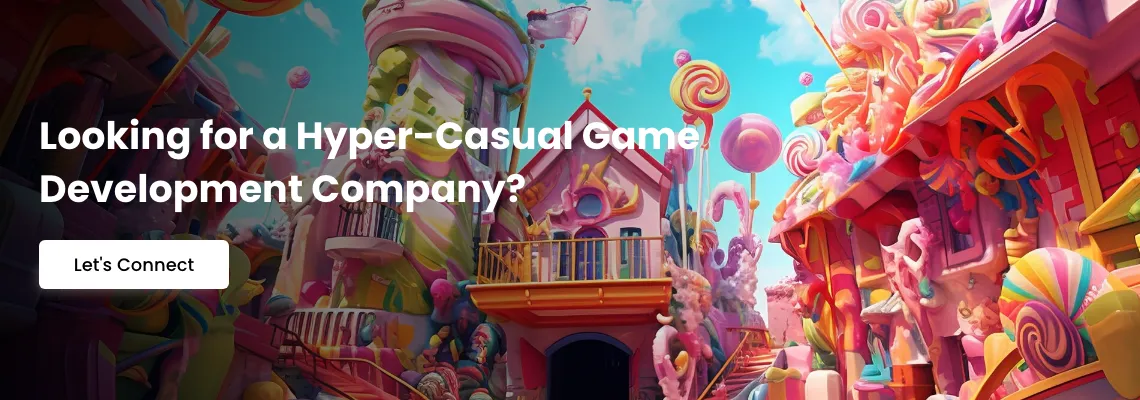
Conclusion: The Post-PUBG Playbook
The survival genre has undergone significant changes since PUBG Mobile set the standard. What started as quick, exciting matches has grown into a space where keeping players engaged matters more than just getting downloads. Whiteout Survival demonstrates that the future is about striking a balance between community, progress, and fair monetization, while still delivering an engaging gameplay experience.
The main takeaway for developers is that winning a match doesn’t mean winning the market. In 2025, survival games aren’t about getting the most downloads, but about building systems that keep players returning every season. Features like cross-season progress, alliances, and story elements are now essential, not just extras.
At StudioKrew, we believe these principles extend far beyond survival games. Whether you’re designing online multiplayer worlds, building custom mobile titles, or experimenting with MMO-scale ecosystems, the same playbook applies: create experiences that respect player time, foster community, and deliver value across every update.
In a world after PUBG, the winners won’t just be the fastest shooters. The real winners will be the studios that know how to keep players engaged. That’s the survival strategy that matters most.
